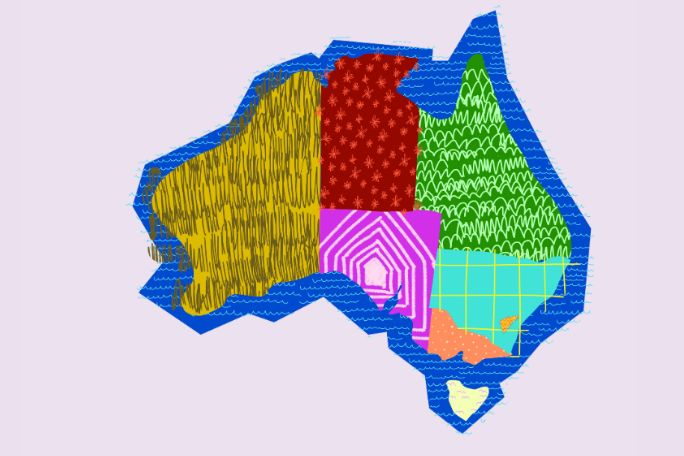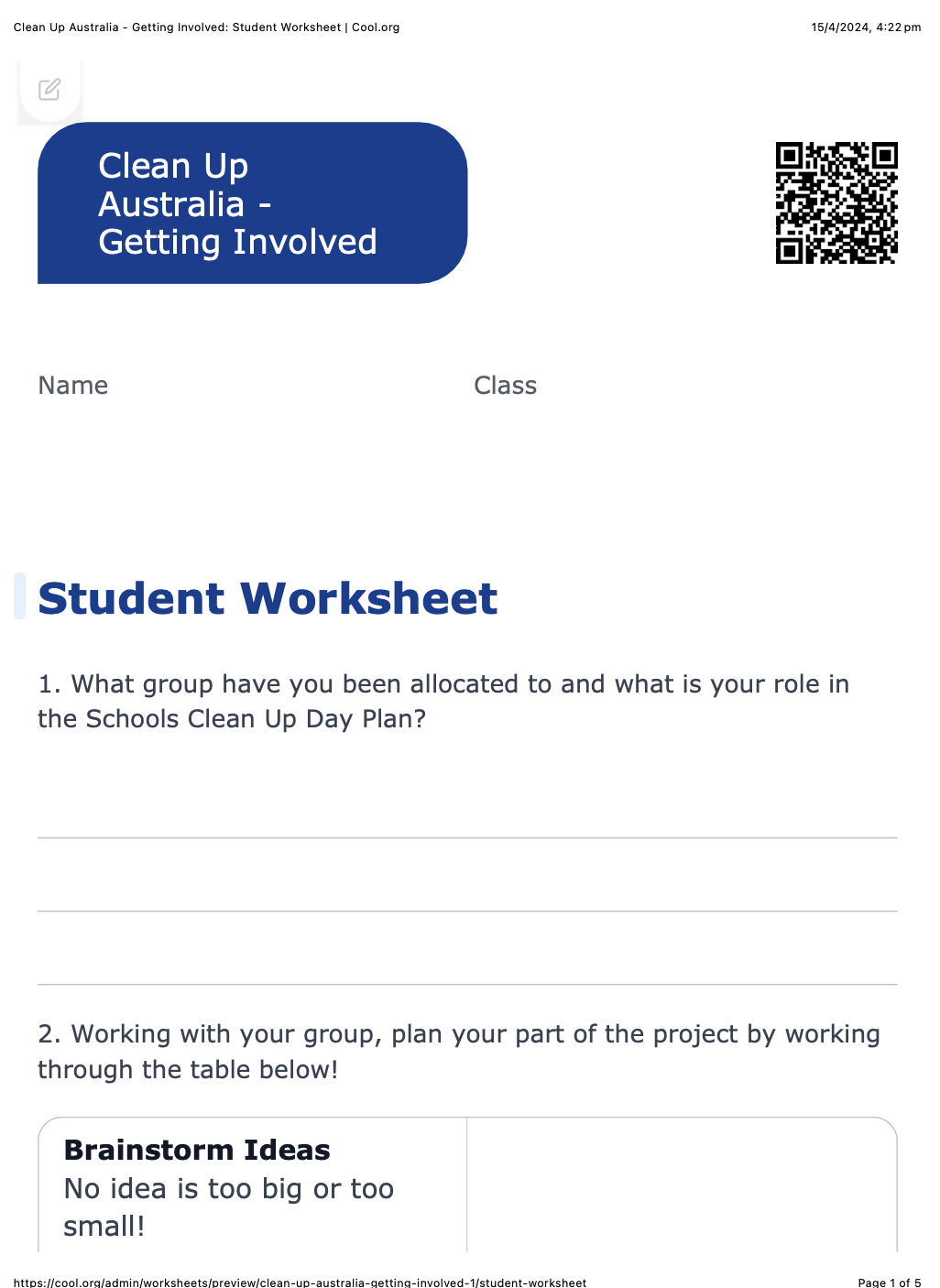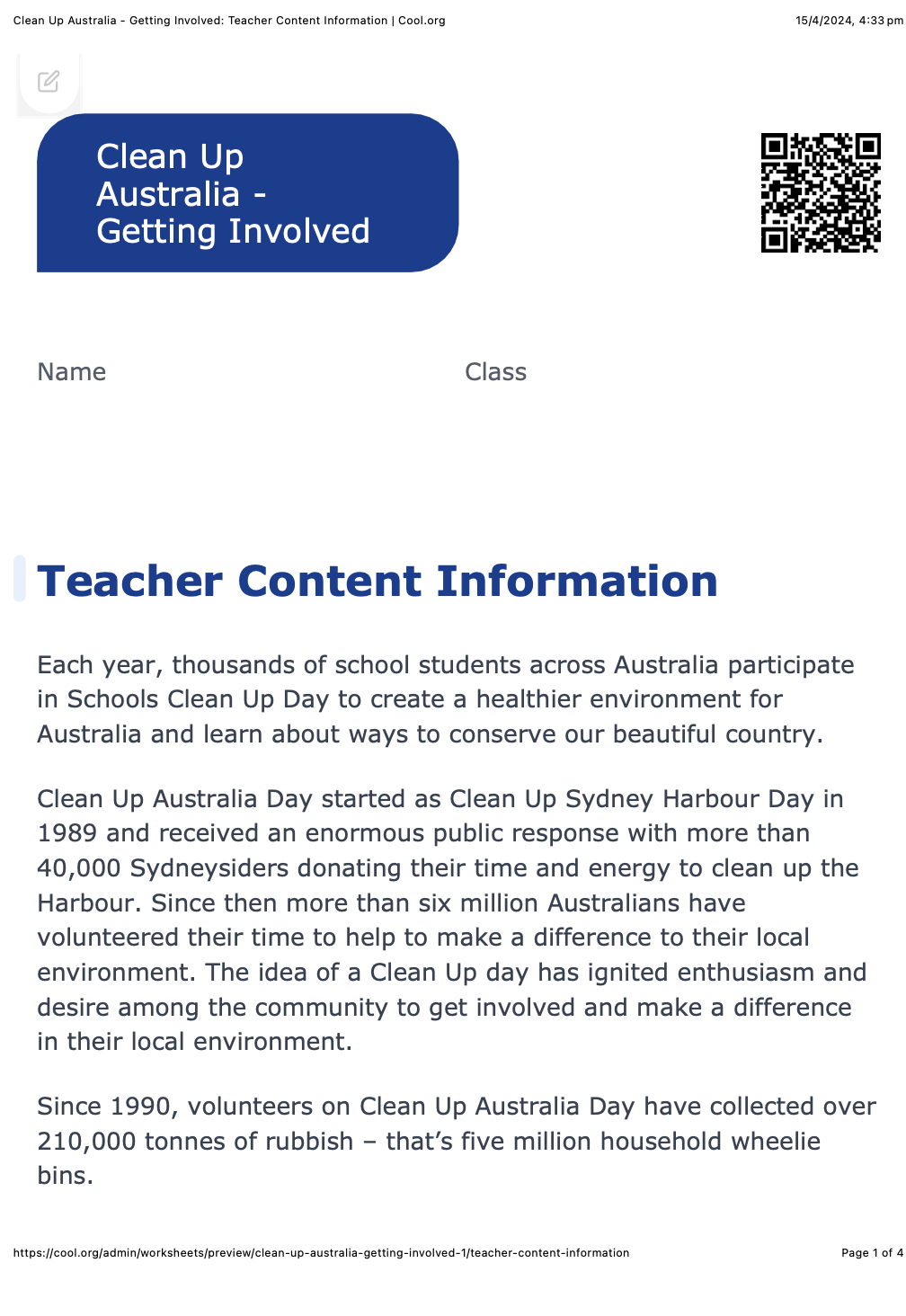Lesson summary
Students will plan for and participate in Schools Clean Up Day (or a clean up on any other day of the year!).
In groups, students will choose a site within their local community or school and plan for how their school/local community could conduct a Clean Up Day. Students will collect data on what they find during the Clean Up and, from this data, will determine some possible solutions to any rubbish problems they uncover. Alternatively, you may want to organise Schools Clean Up Day yourself and then get students to complete an analysis of the results.
Learning intentions:
Students will...
- explore how community involvement helps protect the environment by planning and participating in a Schools Clean Up day
- reflect on how waste affects nature nearby and suggest ways to manage waste better in their local community.
Success criteria:
Students can...
- describe the impacts of litter on waste in the environment and local communities
- plan and participate in their Schools Clean Up event
- evaluate the effectiveness of their efforts by analysing the types and quantities of trash collected and proposing recommendations for reducing waste in the future.
Lesson guides and printables
Curriculum links
Select your curriculum from the options below.
Lesson details
Skills
This lesson is designed to build students’ competencies in the following skills:
- community engagement
- communication
- creativity
- problem solving
Curriculum Mapping
Australian Curriculum (v9.0) content description: Year 7 - 10 Geography
Year 7 & 8
- Identify a strategy for action in relation to environmental, economic, social or other factors, and explain potential impacts (AC9HG7S05/AC9HG8S05)
Year 9 & 10
- Develop and evaluate strategies using environmental, economic or social criteria; recommend a strategy and explain the predicted impacts (AC9HG9S05/AC9HG10S05)
Relevant parts of Year 7 - 10 achievement standards:
Year 7 & 8: Students can draw reasoned conclusions about the impact of the geographical phenomenon or challenge, decide on appropriate strategies for action and explain potential impacts.
Year 9 & 10: Students can draw evidence-based conclusions, based on relevant data and information, about the impact of a geographical phenomenon or challenge. They develop and evaluate strategies using criteria, recommend a strategy and explain the predicted impacts.
NSW Syllabus outcomes: ACHGS054, ACHGS062, ACHGS071, ACHGS080
General capabilities: Critical and Creative Thinking
Cross-curriculum priority: Sustainability
Level of teacher scaffolding: High - Supporting students to run their own Schools Clean Up Day.
UN Sustainable Development Goals
UN SDG 12: Ensure sustainable consumption and production patterns
- Target 12.5: By 2030, substantially reduce waste generation through prevention, reduction, recycling and reuse.
Resources Required
- Devices with internet access
- Gloves and tongs for collecting waste
- Printed school maps, Schools Clean Up Day Groups
- Student Worksheet
- Optional - Schools Clean Up Kit (Order through Clean Up Australia here)
Additional Info
This lesson was created in partnership with Clean Up Australia and its Education Partner, Unilever Australia – maker of household staples including Dove, Rexona, TRESemmé, Omo, Continental, Hellmann’s and Streets ice creams. Unilever and Clean Up Australia joined forces in 2020 to help inspire and empower Australians to clean up, fix up and conserve our environment. To learn more about the action Unilever is taking to improve the health of the planet, visit Sustainability - Planet & Society | Unilever.
Following this lesson plan is an ideal way for your school to take part in Schools Clean Up Day or a Clean Up on any day of the year. You’ll be joining thousands of amazing teachers in making a difference and creating positive environmental change.




Welcome back!
Don't have an account yet?
Log in with:
Create your free Cool.org account.
Many of our resources are free, with an option to upgrade to Cool+ for premium content.
Already have an account?
Sign up with:
By signing up you accept Cool.org's Terms and Conditions(Opens in new tab) and Privacy Policy(Opens in new tab).